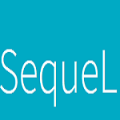Obsolete devices add to the rising levels of electronic waste, a major environmental concern, and a contributing factor to climate change. In recent years, device manufacturers have established environmental commitments and launched initiatives such as supporting the recycling of obsolete devices by making more ways available for consumers to safely dispose of their old devices. However, little support is available for individuals who want to continue using legacy or 'end-of-life' devices and few studies have explored the usefulness of these older devices, the barriers to their continued use and the associated user experiences. With a human-computer interaction lens, this paper reflects on device usefulness as a function of utility and usability, and on the barriers to continued device use and app installation. Additionally, the paper contributes insights from a sequel study that extends on prior work evaluating app functionality of a 'vintage' Apple device with new empirical data on app downloadability and functionality for the same device when newly classified as 'obsolete'. A total of 230 apps, comprising the top 10 free App Store apps for each of 23 categories, were assessed for downloadability and functionality on an Apple iPad Mini tablet. Although only 20 apps (8.7%) could be downloaded directly onto the newly obsolete device, 143 apps (62.2%) could be downloaded with the use of a different non-legacy device. Of these 163 downloadable apps, 131 apps (com-prising 57% of all 230 apps and 80.4% of the downloadable apps) successfully installed, opened, and functioned. This was a decrease of only 4.3% in functional apps (of the 230 total apps) compared to the performance of the device when previously classified as 'vintage'.
翻译:暂无翻译
相关内容
Source: Apple - iOS 8




